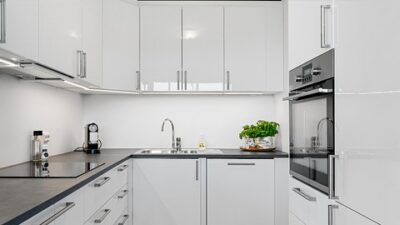Kitchens have always been the heart of the home, evolving alongside our lifestyles, technology, and tastes. Two prominent design styles—classic and contemporary—embody vastly different approaches to aesthetics, functionality, and cultural significance. For homeowners and designers alike, understanding these styles can translate into creating a culinary space that not only meets practical needs but also embodies personal taste.
Classic Kitchen Design
Characteristics
Classic kitchen designs are characterized by their timeless appeal, intricate details, and a sense of permanence. These kitchens often feature:
- Materials: Rich woods, natural stones like marble or granite, and classic tiles.
- Cabinetry: Traditional raised-panel or shaker-style cabinets that exude elegance, often painted in neutral tones or deep, rich colors.
- Details: Decorative elements such as crown molding, corbels, and generous trim work.
- Layouts: Often emphasize symmetry and can include separate work zones, such as a dedicated baking or prep area.
Key Features
- Color Palette: Soft, muted colors dominate, often accented with whites or creams for contrast.
- Furnishings: Antique or vintage-inspired furniture pieces, such as a farmhouse table or ornate stools.
- Lighting: Chandeliers or pendant lights with ornate fixtures that complement the overall style.
Influence and Relevance
The classic kitchen draws inspiration from historical design periods, such as Colonial, Victorian, and even European influences like French country and Italian Renaissance. These kitchens evoke warmth, comfort, and a deep sense of tradition, making them an everlasting choice for those who value heritage and craftsmanship.
Contemporary Kitchen Design
Characteristics
Contemporary kitchens represent the forefront of style, marked by simplicity and functionality. These designs often prioritize:
- Materials: Sleek, modern materials like stainless steel, glass, and concrete.
- Cabinetry: Flat-panel cabinets with minimal hardware, featuring glossy or matte finishes.
- Details: Clean lines, open spaces, and an overall minimalist aesthetic.
- Layouts: Open-concept, merging the kitchen with living or dining areas to enhance social interaction.
Key Features
- Color Palette: Neutral tones such as grays and whites dominate, often punctuated with bold accents like bright yellows or deep blues.
- Furnishings: Modern, ergonomic furniture that prioritizes comfort and usability, often with multi-functional designs.
- Lighting: LED recessed lighting and stylish pendant lights with geometric shapes or innovative designs.
Influence and Relevance
Contemporary kitchen design reflects today’s lifestyle, focusing on sustainability, technology integration, and efficiency. As more homeowners seek functional spaces that reflect their lifestyle choices, contemporary kitchens have gained popularity due to their adaptability and modernity.
Navigating Your Kitchen Design Journey
Blending Styles
For many homeowners, a hybrid approach combining elements of both classic and contemporary styles can lead to a distinctive kitchen that marries tradition with modern functionality. For instance, opting for contemporary appliances within a classic cabinetry layout can provide the best of both worlds.
Personal Taste and Lifestyle
The choice between classic and contemporary hinges largely on personal preference and lifestyle. Families valuing warmth and tradition may lean toward classic designs, while those prioritizing sleek, functional spaces might opt for contemporary.
Practical Considerations
-
Space: Consideration of kitchen size can determine style viability. Open, airy spaces may lend themselves well to contemporary design, while smaller areas might benefit from classic styling to create a warm, inviting atmosphere.
- Functionality: Assess how the kitchen will be used. Cooking enthusiasts may prefer classic designs for their practical work zones, whereas busy families might favor contemporary, multifunctional spaces.
Conclusion
Ultimately, the kitchen design you choose should reflect your individuality, needs, and the overall character of your home. Whether you find comfort in the charm of classic kitchens or the sleek simplicity of contemporary styles, navigating these design choices is essential in creating a space that feels not just functional but also personally enriching. Embrace the journey of designing your kitchen, exploring the timeless elegance of tradition or the dynamic allure of modernity, and create a heart for your home that truly reflects who you are.



